Plums and Custard
A beautiful looking mushroom that can grow in large numbers on the forest floor. It is considered to be edible by some but is too bitter to enjoy and is best just admired. It has also been reported that some people can have an adverse reaction to consuming this mushroom.
| Mushroom Type | |
| Common Names | Plums and Custard (EN), Eirin a Chwstard (CY), Rycerzyk Czerwonozłoty (PL), Bársonyos Fapereszke (HU) |
| Scientific Name | Tricholomopsis rutilans |
| Season Start | Jul |
| Season End | Nov |
| Average Mushroom height (CM) | 10 |
| Average Cap width (CM) | 10 |
Cap
The cap is yellow beneath the purple to red covering of tiny scales. The off colour semi-circle at the top of the image is staining from the spores of an overlapping cap.
Habitat
On rotting conifer stumps and roots or fallen conifer trees. Can occasionally be found on broad leaf tree stumps.
Possible Confusion
Looks similar to the closely related Prunes and Custard, Tricholomopsis decora, but it is a rare find in the UK and is paler and more yellow to golden in colour.
Spore Print
White. Ellipsoid.
Taste / Smell
Bitter.
Frequency
Fairly common.
Other Facts
This mushroom is saprobic meaning it lives off rotting organic matter, in this case mainly rotting conifer wood.


 (4 votes, average: 4.25 out of 5)
(4 votes, average: 4.25 out of 5)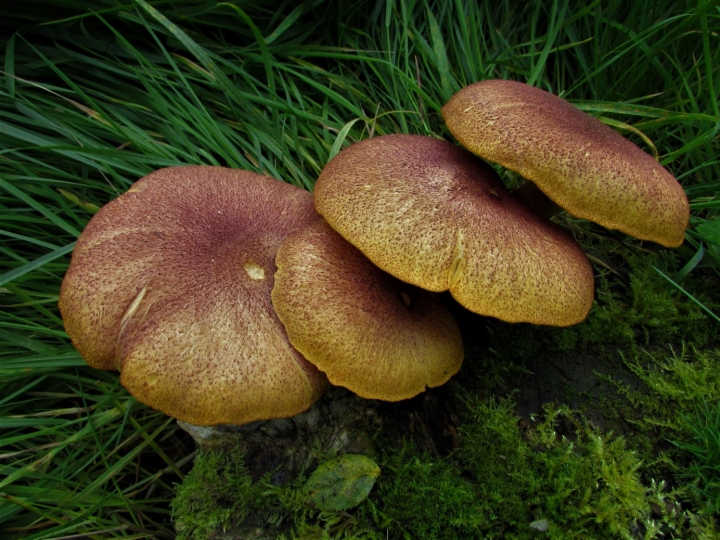















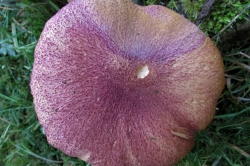
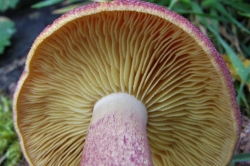
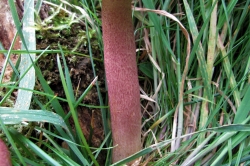
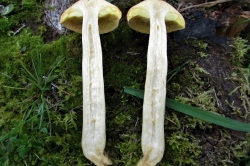
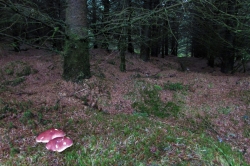






1 comment for Plums and Custard
Found some of these at Stafford Castle recently on a rotting stump. Very cool and unique find! Although it’s reported bitter in taste I can’t taste any bitterness within it. It tasted rather soft and plain which is kinda silly to write about, and the smell is actually quite nice/ok! (Note I haven’t actually consumed it nor indorse doing so, just a simple taste test then spit/wash)